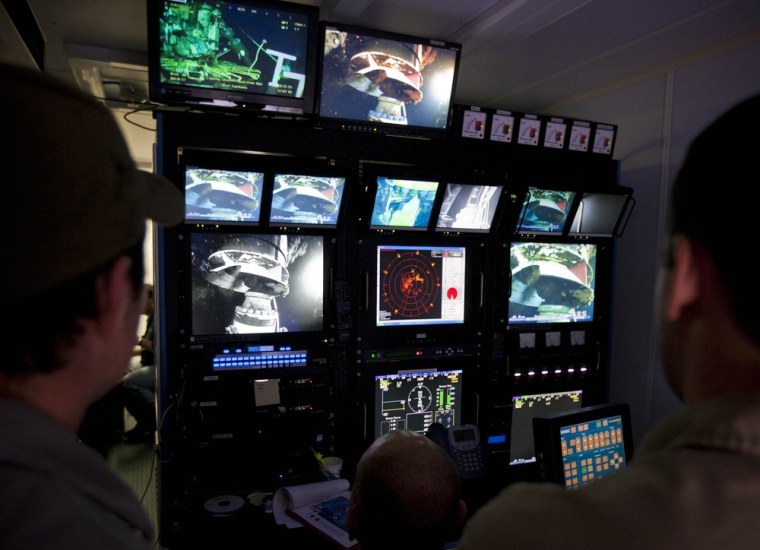BP, which permanently sealed its ruptured Gulf of Mexico well this weekend, said on Monday it is joining the industry's $1 billion effort to contain future subsea oil spills.
As part of its agreement to join the Marine Well Containment Company headed by Exxon Mobil Corp., BP will make its underwater well containment equipment — as well as spill-tested staff — available to oil and gas companies operating in the Gulf.
Chevron, ConocoPhillips, Exxon and Royal Dutch Shell said in July they are developing a new, rapid-response oil spill containment system in the Gulf to help prevent another disaster like the Macondo blow-out.
The BP equipment used in the Gulf disaster could capture and contain oil from a potential underwater well blowout while the new system announced is under development, the British company said.
"We believe the addition of our recently gained deepwater intervention experience and specialized equipment will be important to the marine well containment system," Richard Morrison, BP vice president for Gulf of Mexico operations, said in a statement.
BP's Macondo well rupture off the coast of Louisiana on April 20 caused an explosion that killed 11 workers and spilled more than 4 million barrels of crude oil into the Gulf.
It took the company five months to permanently kill the well, although it was capped July 15 and no oil flowed into the water since that date.
The industry's rapid-response system, which will be available for mobilization within 24 hours, will be used on a range of equipment and in varying weather conditions and has the potential for expansion.
It will consist of specially designed subsea containment equipment connected by manifolds, jumpers and risers to capture vessels that will store and offload any spilled oil.
Existing BP equipment is being assessed for use in near-term response capability. The sponsor companies' project team will also be able to use full time BP technical personnel with experience from the Gulf of Mexico response.
BP's equipment will be operated by MWCC.
BP had earlier indicated it was not prepared to join while it was focused on the spill cleanup.
Exxon Mobil welcomed BP's help, saying it would held lead to a "system that exceeds current response capabilities."
It did not, however, provide a date for when the system would be ready.
The joint venture’s equipment is to include a containment vessel capable of capturing up to 100,000 barrels of oil a day and other equipment to siphon any leaking oil up from the seafloor to a depth of 10,000 feet.
Oil companies banded together and founded a similar organization soon after the Exxon Valdez spill in Alaska in 1989. The Virginia-based Marine Spill Response Corp was formed to respond to oil spills and much of its available equipment is already deployed in the Gulf.
